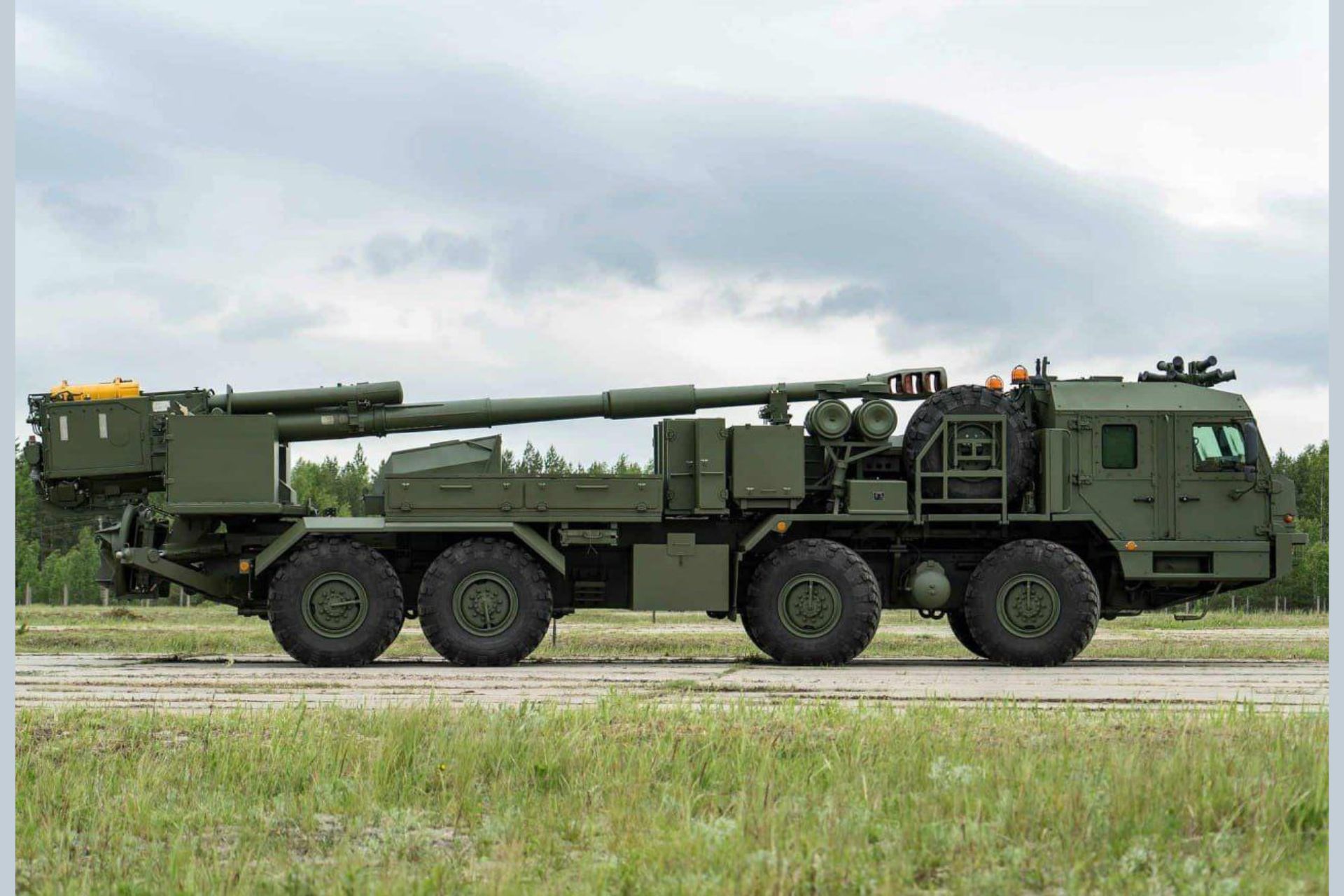Breaking news
Ukrainian UAV spotted first appearance of 2S43 Malva new Russian Self-propelled Howitzer.
A Ukrainian observation drone has spotted the Russian self-propelled artillery system 2S43 Malva in the Belgorod region. The Malva came out of development in 2023, created by TsNII "Burevestnik" and manufactured by Uraltransmash, a subsidiary of Uralvagonzavod, a company known for its armored vehicles. Thus, the 2S43 system is modern and appears to be effective on the front, however, little data is available to date.
Follow Army Recognition on Google News at this link

2S43 Malva during presentation to Russian Armed forces (Picture source: Russian Armed Forces )
The 2S43 "Malva" possesses a 152 mm 2A64 cannon, with a 30 rounds ammunitions stowage. It has an effective range of 24.5 km, a gun elevation of +70°, depression of -3° and azimuth of
±30°. Other reports say that the 2S43 could be equipped with the 2A88 cannon which is used by the 2S35 Koalitsiya-SV. It has cabin armor to be protected against small arms and shrapnel. With an operational mass of 32 tons, the 2S43 is much more mobile than other self-propelled guns like the 42-ton 2S19 Msta or other tracked self-propelled artillery.
Currently, the 2S43 Malva is being used to support ground operations and for counter-battery fire. In other words, this cannon is utilized to destroy Ukrainian positions from a certain distance, and after Ukrainian fire, to accurately target Ukrainian artillery batteries. The 2S43 Malva has been deployed since January 2024 in the Ukrainian theater of operations and plays a predominant role in the continuation of Russian operations. The 2S43 is equipped with digital targeting systems, allowing for high precision in targeting and objective determination.

2S43 Malva spotted near the Ukrainian border, Belgorod Region (Picture source: Ukrainian Armed Forces )
It is known that the 2S43 Malva is similar to the French Caesar 8x8 and the Ukrainian Bogdana system. Like these self-propelled howitzers, it features an automatic system, which allows for a particularly high rate of fire. The Russians have announced that this system is capable of firing nuclear projectiles, which again raises the risk of nuclear escalation in response to Western actions. The development of nuclear artillery began during the Cold War.
The use of such a recently developed vehicle demonstrates Russia's capability in research and development, and its readiness for ongoing conflict. Currently, the impact cannot be truly quantified, as few images and data are available regarding this system.


























